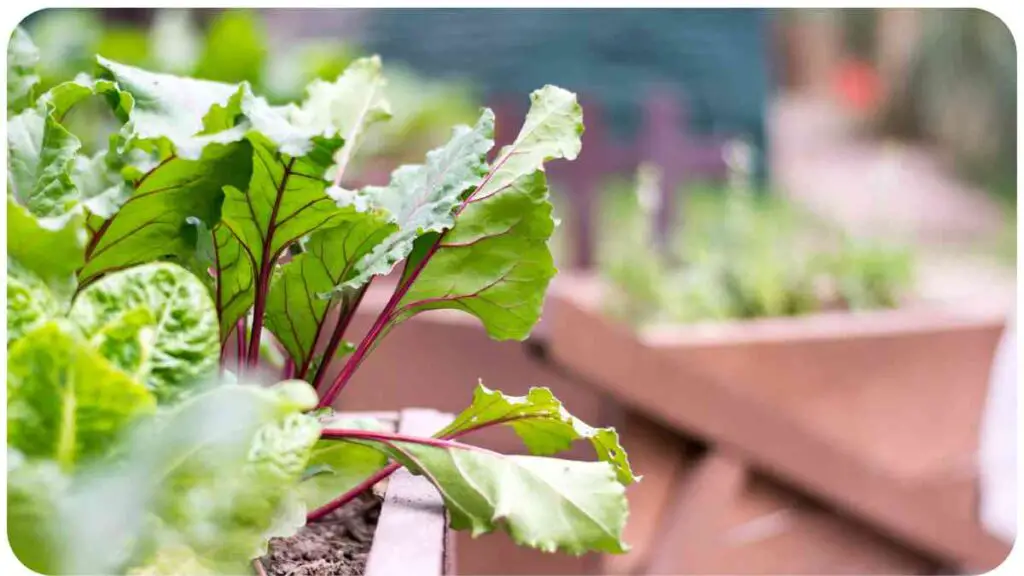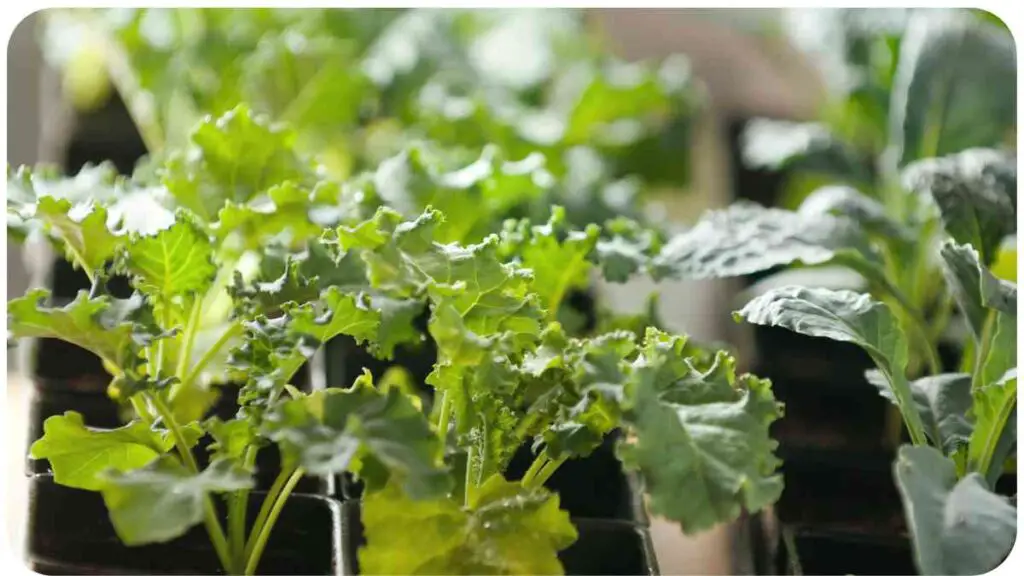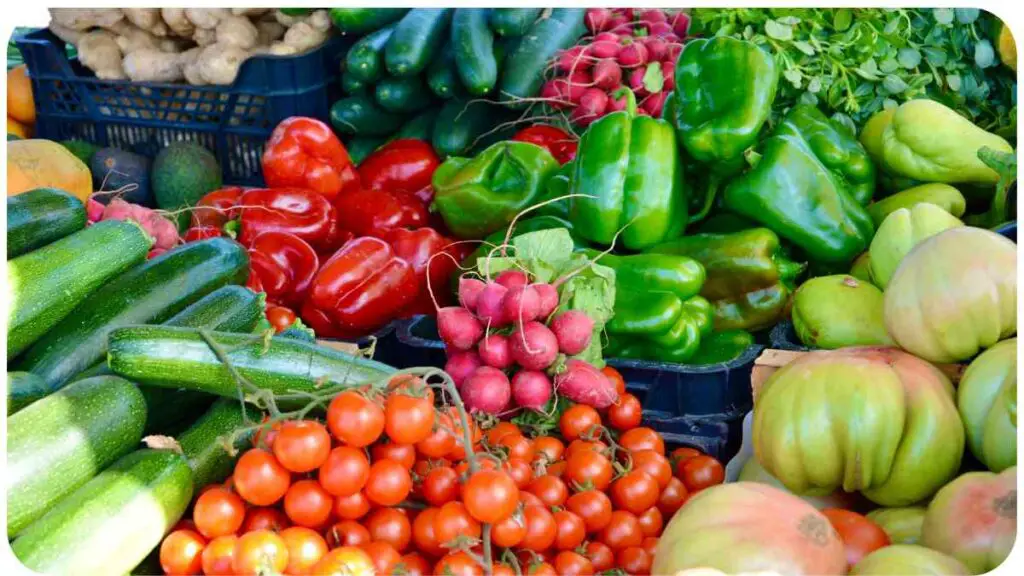Welcome to the world of balcony gardening! In this beginner’s guide, we’ll explore everything you need to know about growing vegetables on your balcony.
Whether you’re a seasoned gardener looking to downsize or a novice with a green thumb, balcony veggies offer a convenient and rewarding way to bring nature closer to home.
| Key Points |
|---|
| Choose vegetables suited to balcony gardening |
| Select containers with adequate drainage |
| Use a well-draining potting mix for healthy plants |
| Provide sufficient sunlight for optimal growth |
| Regularly monitor and manage pests and diseases |
| Harvest vegetables at peak freshness for best flavor |
2. Why Grow Veggies on Your Balcony?

| Benefits of Balcony Veggies |
|---|
| 1. Space-saving solution |
| 2. Fresh and organic produce |
| 3. Therapeutic gardening |
| 4. Educational opportunities |
| 5. Cost-effective |
Gardening on a balcony presents unique opportunities and challenges. However, the benefits far outweigh the limitations. Let’s delve deeper into why balcony veggies are worth considering.
Controlling grub worms ensures a healthy garden ecosystem. By eliminating these pests, you safeguard your flowers from root damage, promoting vibrant growth and blooming.
3. Getting Started
Choosing the Right Vegetables
| Best Vegetables for Balcony Gardening |
|---|
| 1. Tomatoes |
| 2. Peppers |
| 3. Herbs (Basil, Mint, Parsley) |
| 4. Lettuce |
| 5. Radishes |
When selecting vegetables for your balcony garden, opt for varieties that thrive in containers and have compact growth habits. Tomatoes, peppers, and herbs like basil and mint are excellent choices for beginners due to their adaptability to container gardening.
Container Selection Guide
| Container Materials | Pros | Cons |
|---|---|---|
| Plastic | Lightweight, affordable | Prone to cracking and fading |
| Ceramic | Aesthetically pleasing, durable | Heavy, can be expensive |
| Fabric | Lightweight, promotes root aeration | Susceptible to mold and deterioration |
| Wooden | Natural look, good insulation | May rot over time, requires maintenance |
Choose containers with adequate drainage holes to prevent waterlogging, and ensure they are large enough to accommodate the root systems of your chosen vegetables.
4. Soil and Fertilizer Basics
Soil Types for Balcony Gardening
| Soil Type | Characteristics | Best Vegetables |
|---|---|---|
| Potting Mix | Lightweight, well-draining | All vegetables |
| Compost | Rich in nutrients, improves soil texture | Leafy greens, herbs |
| Vermiculite | Enhances soil aeration, retains moisture | Tomatoes, peppers |
| Perlite | Improves drainage, prevents compaction | Root vegetables, lettuce |
A good potting mix forms the foundation of a healthy balcony garden. Consider mixing compost, vermiculite, and perlite to create a nutrient-rich and well-draining soil blend.
Efficient maintenance prolongs the life of gardening tools. Explore top additives for your mower’s gas tank to prevent water-related issues, ensuring seamless operation.
Fertilization Schedule
| Stage | Fertilizer | Frequency |
|---|---|---|
| Seedling Stage | Balanced fertilizer | Every 2 weeks |
| Vegetative Stage | Nitrogen-rich | Monthly |
| Flowering Stage | Phosphorus-rich | Bi-weekly |
| Fruit Setting | Potassium-rich | Monthly |
Fertilize your balcony veggies regularly according to their growth stages to ensure robust growth and bountiful harvests.
5. Watering Techniques
Watering Frequency Guide
| Vegetable | Watering Frequency |
|---|---|
| Tomatoes | Every 2-3 days |
| Peppers | Every 2-3 days |
| Herbs | Every 2-3 days |
| Lettuce | Daily |
| Radishes | Every 2 days |
Water your balcony vegetables consistently, ensuring the soil remains evenly moist but not waterlogged. Adjust watering frequency based on environmental conditions and plant needs.
Watering Methods
| Method | Description | Best Used for |
|---|---|---|
| Hand Watering | Using a watering can or hose to water individual pots | All vegetables |
| Drip Irrigation | Installing a drip system for automated watering | All vegetables |
| Self-watering Pots | Utilizing pots with built-in reservoirs for water retention | All vegetables |
Choose a watering method that suits your schedule and the needs of your balcony garden.
6. Sunlight Requirements
Sunlight Exposure Chart
| Vegetable | Sunlight Requirement |
|---|---|
| Tomatoes | Full sun (6-8 hours per day) |
| Peppers | Full sun (6-8 hours per day) |
| Herbs | Partial to full sun (4-6 hours per day) |
| Lettuce | Partial shade to full sun (4-6 hours per day) |
| Radishes | Full sun (6-8 hours per day) |
Position your balcony vegetable containers in areas that receive adequate sunlight according to their specific requirements. Supplemental grow lights can be used for vegetables that require more sunlight than your balcony receives naturally.
Harness lunar cycles to optimize plant growth and health. Delve into this comprehensive guide for insights on aligning gardening tasks with lunar phases, enhancing overall productivity.
7. Pests and Diseases Management

Common Pests and Diseases
| Pest/Disease | Symptoms | Prevention and Treatment |
|---|---|---|
| Aphids | Sticky residue on leaves, stunted growth | Spray with insecticidal soap or neem oil |
| Powdery Mildew | White powdery patches on leaves | Improve air circulation, apply fungicide as needed |
| Spider Mites | Fine webbing on leaves, yellowing foliage | Rinse with water, apply insecticidal soap |
| Blossom End Rot | Dark, sunken spots on fruit bottoms | Ensure consistent watering, add calcium to soil |
Monitor your balcony veggies regularly for signs of pests and diseases, and take prompt action to prevent outbreaks and minimize damage.
8. Harvesting and Maintenance
Harvesting Guide
| Vegetable | Harvesting Time | Harvesting Method |
|---|---|---|
| Tomatoes | When fully ripe | Twist or cut from the vine |
| Peppers | When firm and colored | Snip from the plant using scissors |
| Herbs | When leaves are full | Pinch off individual leaves |
| Lettuce | When leaves are mature | Cut outer leaves with scissors |
| Radishes | When roots are plump | Pull from the soil |
Harvest your balcony veggies at the peak of freshness for the best flavor and nutritional content.
Maintenance Tips
| Task | Frequency |
|---|---|
| Pruning | Weekly |
| Fertilizing | Monthly |
| Pest Inspection | Bi-weekly |
| Weed Removal | As needed |
Regular maintenance is key to keeping your balcony garden healthy and productive throughout the growing season.
Choosing the right potting mix is essential for flourishing flowers. Refer to this ultimate guide to select the ideal mix, ensuring optimal soil conditions for your balcony garden.
9. Success Stories: From Balcony to Table
Jennifer’s Tomato Triumph
Jennifer, a balcony gardening enthusiast, transformed her small balcony into a thriving vegetable garden. Despite limited space, she managed to grow juicy tomatoes in containers, thanks to her diligent care and attention to detail. Jennifer’s balcony tomatoes became the envy of her neighbors, who were amazed by the flavor and freshness of her homegrown produce.
Miguel’s Pepper Paradise
Miguel, a beginner gardener, decided to try his hand at balcony gardening with peppers. With a combination of proper container selection, nutrient-rich soil, and regular watering, Miguel’s peppers flourished on his sunny balcony. He enjoyed harvesting vibrant bell peppers throughout the summer, adding a pop of color and flavor to his meals.
10. Tips for Maximizing Yield
Tip 1: Companion Planting
| Companion Plants | Benefits |
|---|---|
| Basil | Deters pests, enhances flavor of tomatoes |
| Marigolds | Repels pests, attracts beneficial insects |
| Nasturtiums | Attracts pollinators, repels aphids |
Planting companion herbs and flowers alongside your vegetables can improve soil health, deter pests, and increase overall yield.
Tip 2: Vertical Gardening
Utilize vertical space on your balcony by installing trellises, hanging baskets, or wall-mounted planters. Vertical gardening not only maximizes space but also promotes better air circulation and sunlight exposure for your plants.
Tip 3: Season Extension
| Season Extension Techniques | Benefits |
|---|---|
| Cold Frames | Protects plants from frost and wind damage |
| Row Covers | Extends the growing season, pest control |
| Greenhouse | Provides controlled environment year-round |
Extend the growing season for your balcony veggies by using season extension techniques such as cold frames, row covers, or a small greenhouse.
11. Common Mistakes to Avoid
Mistake 1: Overcrowding
| Effects of Overcrowding |
|---|
| Stunted growth |
| Competition for nutrients |
| Increased susceptibility to pests and diseases |
Avoid overcrowding your balcony containers to ensure adequate airflow and room for root development. Follow spacing recommendations for each vegetable variety to optimize growth and yield.
Transform your balcony into a haven for pollinators and biodiversity. Discover tips for creating a pollinator paradise in your backyard, fostering a thriving ecosystem and enhancing plant health.
Mistake 2: Inadequate Drainage
| Consequences of Poor Drainage |
|---|
| Waterlogged soil |
| Root rot |
| Nutrient leaching |
Ensure containers have proper drainage holes and use well-draining soil to prevent waterlogging. Elevate pots on pot feet or bricks to allow excess water to drain freely.
Mistake 3: Neglecting Pest Management
| Risks of Neglecting Pest Management |
|---|
| Crop damage |
| Reduced yield |
| Spread of pests to neighboring plants |
Stay vigilant against pests by regularly inspecting your balcony garden and implementing preventative measures such as companion planting, natural predators, and organic pesticides when necessary.
12. Sustainability Practices

Sustainable Balcony Gardening Tips
| Sustainable Practices | Benefits |
|---|---|
| Composting | Reduces waste, enriches soil |
| Rainwater Harvesting | Conserves water, reduces runoff |
| Using Organic Fertilizers | Improves soil health, reduces environmental impact |
Embrace sustainable practices in your balcony garden to minimize your environmental footprint and promote long-term ecological balance.
13. Conclusion
Balcony gardening is a rewarding endeavor that allows you to enjoy the benefits of fresh, homegrown produce even in limited space. By following the tips and techniques outlined in this beginner’s guide, you can create a flourishing vegetable garden right outside your door.
From selecting the right vegetables and containers to managing pests and maximizing yield, balcony gardening offers endless possibilities for urban dwellers and gardening enthusiasts alike. So roll up your sleeves, grab your gardening gloves, and start transforming your balcony into a vibrant oasis of greenery and flavor!
Further Reading
- A Beginner’s Guide to Growing Your Own Veggies: This comprehensive guide offers valuable insights and tips for novice gardeners looking to start their own vegetable garden.
- How to Grow a Vegetable Garden on Your Balcony: Learn practical strategies and creative ideas for maximizing space and productivity in your balcony vegetable garden with this informative article.
- Beginner’s Guide to Starting a Balcony Garden: Discover the essentials of balcony gardening, including container selection, soil preparation, and plant care tips, in this beginner-friendly guide.
FAQs
How much sunlight do balcony vegetables need?
Balcony vegetables typically require at least 6-8 hours of sunlight per day for optimal growth. Ensure you position your containers in areas that receive adequate sunlight to promote healthy development.
What are the best vegetables for balcony gardening?
Popular vegetables for balcony gardening include tomatoes, peppers, herbs like basil and mint, lettuce, and radishes. These varieties are well-suited to container growing and can thrive in limited space.
How often should I water my balcony vegetables?
The frequency of watering depends on factors such as weather conditions, container size, and plant type. Generally, balcony vegetables may need watering every 2-3 days, but it’s essential to monitor soil moisture levels and adjust accordingly.
How do I prevent pests and diseases in my balcony garden?
Implement preventative measures such as companion planting, regular inspection, and proper sanitation to minimize pest and disease issues. Additionally, avoid overwatering and overcrowding, as these conditions can contribute to pest and disease outbreaks.
Can I grow vegetables on a shaded balcony?
While most vegetables prefer full sun, some leafy greens and herbs can tolerate partial shade. Consider growing shade-tolerant varieties like lettuce, spinach, and parsley if your balcony receives limited sunlight.

For 15 years, Hellen James has worked in the gardening industry as an expert and landscape designer. During her career, she has worked for a variety of businesses that specialize in landscaping and gardening from small firms to large corporations.

